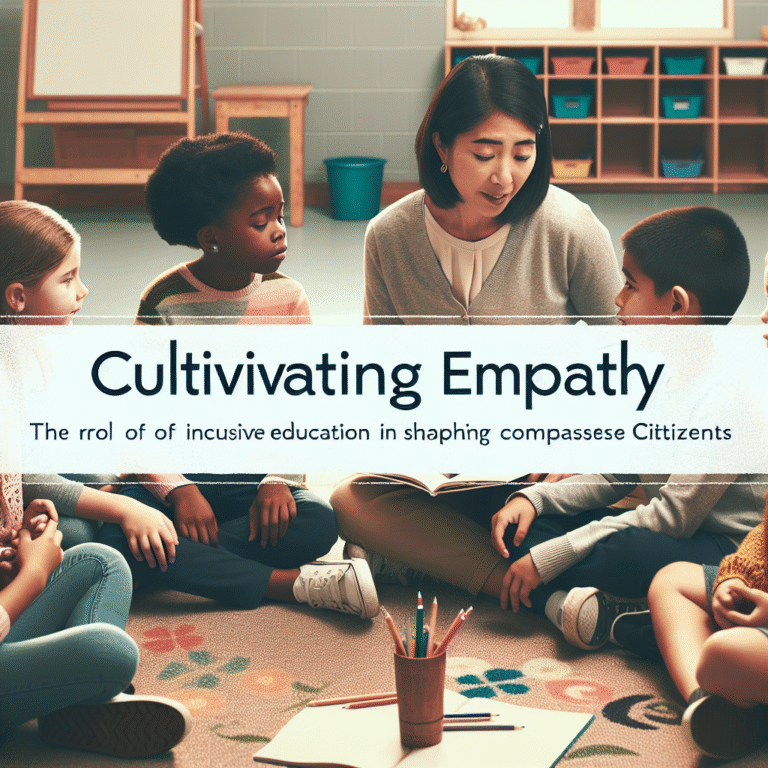
Introduction
In today’s fast-paced, digitally-driven educational landscape, the way we approach learning is evolving. Transforming Learning: The Art and Science of Instructional Design highlights a crucial journey educators, trainers, and organizations undertake to enhance the learning experience. Imagine a world where every learner feels engaged, inspired, and equipped to thrive—this is not just a dream; it’s achievable through effective instructional design.
As technology advances and our understanding of human cognition deepens, instructional design emerges as an essential framework that bridges the gap between knowledge and application. This article not only delves into the foundations of instructional design but also explores innovative strategies and real-world case studies that illustrate its transformative potential.
The Foundations of Instructional Design
What is Instructional Design?
Instructional design is a systematic approach to developing educational programs and training that enhance learning outcomes. It involves understanding the needs of learners, defining clear objectives, and implementing strategies that facilitate effective learning. At its core, Transforming Learning: The Art and Science of Instructional Design combines pedagogical theories with practical application.
Key Principles of Instructional Design
- Learner-Centeredness: The focus remains on the learner’s needs, preferences, and experiences.
- Clear Objectives: Defining specific learning outcomes guides the design process.
- Assessment Strategies: Continuous evaluation helps in refining instructional methods.
The ADDIE Model: A Blueprint for Success
One of the most recognized frameworks in instructional design is the ADDIE model, which stands for Analysis, Design, Development, Implementation, and Evaluation. This systematic approach ensures that learning solutions are not just effective but also adaptable to ever-changing educational landscapes.
| Phase | Description |
|---|---|
| Analysis | Identify learner needs and context |
| Design | Develop learning objectives and structure |
| Development | Create instructional materials |
| Implementation | Deliver the training program |
| Evaluation | Assess the effectiveness and make improvements |
The Art of Instructional Design
Creativity in Curriculum Development
Instructional design is as much an art as it is a science. Creativity plays a vital role in generating engaging content and innovative learning experiences. This section explores various techniques that enhance creativity in instructional design.
Case Study: Gamification in Learning
Incorporating gamification elements—such as achievements, badges, and interactive scenarios—can significantly engage learners. A notable case is the "Kahoot!" platform, where educators harness game-based learning, transforming mundane lessons into dynamic, interactive sessions.
Analysis: This case highlights how the creative application of technology in instructional design can captivate learners, resulting in improved retention and comprehension.
The Science Behind Learning
Understanding Learning Theories
Effective instructional design is deeply rooted in various learning theories, such as:
- Constructivism: Highlights knowledge construction through active engagement.
- Behaviorism: Focuses on observable behaviors and the role of reinforcement.
- Cognitivism: Emphasizes understanding mental processes and structuring content accordingly.
Integrating these theories creates a comprehensive framework for instructional design that acknowledges the complexities of the learning process.
Neuroscience and Learning
Emerging research in neuroscience has shown that emotional engagement plays a crucial role in the learning process. Understanding how the brain processes information informs instructional strategies, especially regarding multimedia use, storytelling, and real-world applications.
Practical Strategies for Transforming Learning
Integrating Technology Effectively
Today’s learners are digital natives, making technology an essential component of instructional design. However, the integration should be purposeful.
Tools and Platforms
- Learning Management Systems (LMS): Platforms like Moodle and Canvas facilitate course delivery and assessment.
- Interactive Content: Tools like Nearpod and Quizlet promote engagement through interactive quizzes and collaborative sessions.
Personalized Learning Paths
Transforming Learning: The Art and Science of Instructional Design also emphasizes the importance of personalized learning. Adaptive learning technologies allow for tailored educational experiences based on individual performance and needs.
Real-World Applications: Case Studies
Case Study: University of Phoenix
The University of Phoenix adopted a blended learning model that combined traditional classroom settings with online learning. By leveraging instructional design principles, they created a flexible environment that catered to adult learners, resulting in increased engagement and improved performance metrics.
Analysis: This case study illustrates how a thoughtful blend of instructional strategies can meet the unique needs of diverse learner populations.
Case Study: Google’s Approach to Employee Development
Google employs a comprehensive instructional design approach that emphasizes collaboration and continuous feedback. Their "Career Guru" program, which connects employees with mentors, reflects the principles of effective instructional design by fostering a culture of shared learning.
Analysis: This highlights the importance of creating opportunities for peer learning and mentorship in transforming the workplace learning experience.
Conclusion
Transforming Learning: The Art and Science of Instructional Design brings to light the profound impact that well-crafted instructional design can have on education and training. By embracing innovative strategies, understanding learning theories, and applying real-world insights, educators and organizations can create enriching learning experiences that empower individuals to succeed.
As we move forward, the call to action is clear: prioritize thoughtful instructional design, explore new technologies, and continuously adapt to the needs of learners. Together, we can shape a brighter future for education.
FAQs
What is the primary goal of instructional design?
The main goal is to create effective, efficient, and engaging learning experiences that ensure positive learner outcomes.
How can technology enhance instructional design?
Technology can facilitate personalized learning, provide interactive content, and streamline assessment processes, enhancing engagement and effectiveness.
What are some common instructional design models?
In addition to ADDIE, other models include SAM (Successive Approximation Model) and Dick and Carey’s Systems Approach.
How do I measure the effectiveness of my instructional design?
Use assessments, feedback surveys, and performance metrics to evaluate how well learners achieve the defined objectives.
What role does storytelling play in instructional design?
Storytelling creates emotional engagement, which can enhance retention and relevance, making content more relatable and memorable.
By synthesizing creativity and scientific principles, Transforming Learning: The Art and Science of Instructional Design is a journey of innovation that not only redefines educational environments but also inspires future generations of learners and educators.

















